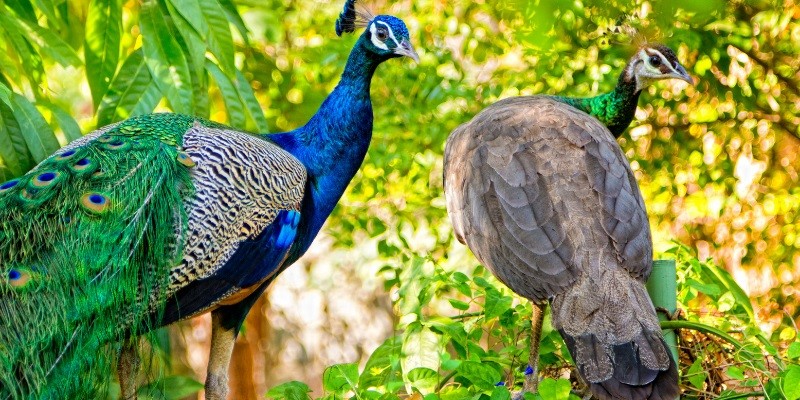Peacocks are stunning avian species with bright plumage and long tails. These proud animals love to preen and show off, but one thing is sure, they are showstoppers! Find out more about these birds, including the difference between male and female peacocks.
There is a lot for you to learn about peacocks. Let’s get down to business, shall we?
What are Peacocks, Peafowls, Peahens, and Peachickens?
First off, let’s clear this up. The correct name for this avian species is peafowl. On the other hand, Peacock refers to the male gender and peahen to the females.
It’s not hard to remember; peahens like the female chicken (hen) and peacock-like the cock or cockerel. Other terminologies used for these birds include peachick the baby peafowl.
Male Vs. Female Peacock
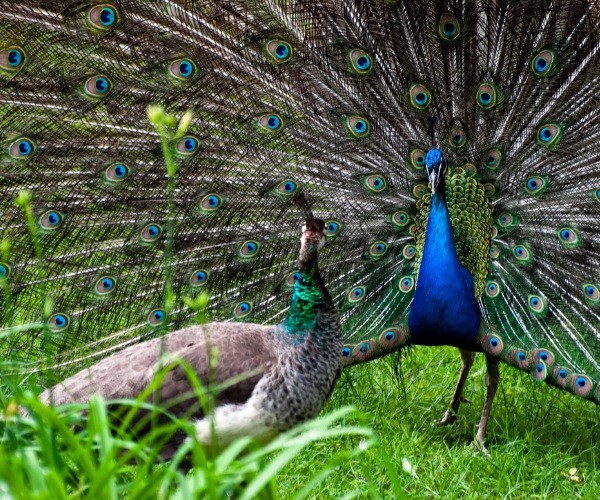
Now that you know the correct terminology for each species let’s delve into the markers that help you differentiate them. Peacocks show sexual dimorphism. This means that there are apparent differences between male and female peacocks. Let’s look at some of these differences below.
Coloration
The first and perhaps most apparent distinction between male and female peacocks is their coloring. Male peacocks have more beautiful colors that catch the attention of even the blind!
They have bright blue and green feathers that cause you to stop and stare, particularly when they are fully extended. These bright hues help them attract females during the breeding season.
On the other hand, female peafowls have feathers that are duller than those of males. Most times, their feathers are brown or gray and help them blend in with their surroundings. Unlike peacocks with blue or green underbellies, peahens have a white abdomen.
Size
Another thing that helps you identify male and female peacocks is their size. Peacocks are considerably larger than peahens at maturity, often weighing around 3 pounds more than peahens. Male peacocks are also about a foot longer than peahens at maturity.
The average peacock weighs around 9-13 pounds while peahens weigh roughly 6-9 pounds.
Tail
Peacocks have more giant tails than peahens. The peacocks’ tail can reach up to a whopping 75 inches instead of that of the female which is only around 2 to 6 inches. While the peacock has vibrant tail feathers, the peahens’ tail feathers are much more subdued and do not span out wide like the male peacocks.
Head and Neck
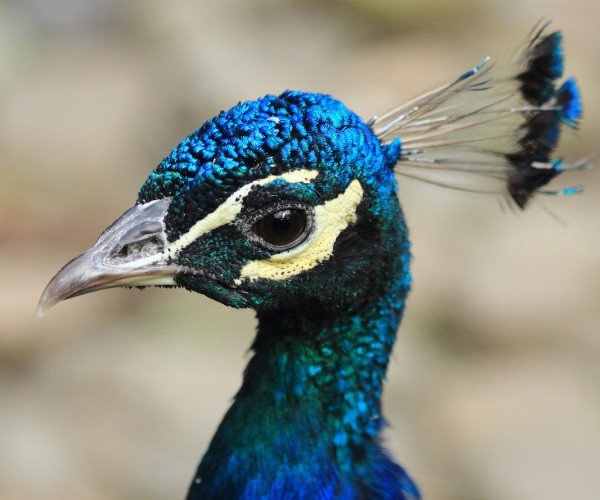
The peafowl’s neck also gives away its sex. Peacocks possess long elegant necks packed with vivid blue feathers that look just like fur. While peahens also have long necks, their neck feathers are dull hues of blue or green and look more like scales.
The male peafowl has a distinct white marking above and beneath its eyes, while the peahen’s eye markings blend in with their skin. Thus, the peahen’s eye marking is difficult to spot.
Crest
Peacocks have long blue feathers that stick up in clusters from its head. Female peacocks (peahens), on the other hand, have brown crest feathers. Peahens can also rustle their neck feathers while peacocks cannot.
Behavior
Female peacocks are more social than males; they tend to their young and build new nests during the day. However, while they tend to their young, they may display increased signs of aggression and territoriality.
On the other hand, the peacock spends his time fanning out his tail to get the peahens’ attention. This form of courtship is exciting to watch. Peacocks spend most of their days isolated, so it is no surprise to learn that they are less friendly.
Legs and Spurs
Another unique thing about peafowls is that both males and females possess spurs that stick out on the back of their legs. However, you will observe slight differences in the spurs on close inspection. For one, peacocks have tougher, more pointed spurs that they use during fights.
The peahens spurs are less pointed and sometimes nonexistent. In light of this, it is easy to see now that the peacock is the defender in this equation.
Why Are Male Peacocks More Colorful?
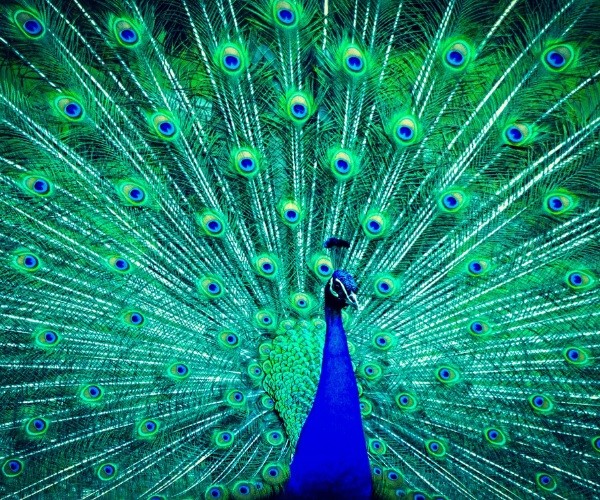
The male peacock has brighter hues and more stunning tail feathers than the peahen. Some people believe that there are natural reasons for this. We shall explore some of these reasons below.
Evolution
Let’s go back to Charles Darwin’s theory that the most colorful males have better chances of surviving natural selection. This is because their bright colors attract females and provide them with an opportunity to mate. The same holds for peacocks; their bright hues help them win the female’s attention.
Peacocks have become even more colorful with each passing year in line with this.
Improved Survival
The color distinction observed in peafowls is an adaptation for survival. The male’s bright colors attract predators to it and away from the females. This means the stronger male has a chance to tackle the predator and defend the peahen.
On the other hand, the peahen’s dull colors help it blend into the background. Thus, helping it avoid predator attacks. Yes, nature has a great way of equipping each species to survive.
Territory
As with every species, peacocks are territorial. Usually, the most colorful male in the group claims territory and has the support of the peahen. They also fan out their long feathers whenever they feel threatened in a bid to intimidate the predator or challenger.
Are White Peacocks Male or Female?
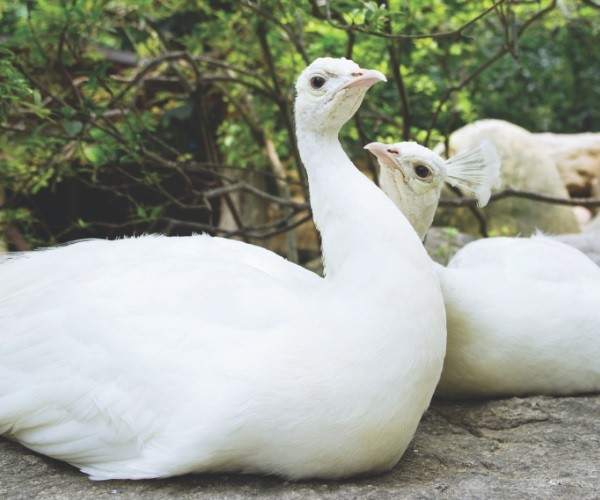
All peacocks are males, and peahens are female peafowl. Thus, it is correct to say all white peacocks are male peafowl. However, not all white peafowls are peahens.
If you get confused, refer to the guide we highlighted above.
Conclusion
Peafowls are fascinating birds that add spice and color to your coop. Hopefully, this article has shed light on identifying the male peacocks from the female peacocks (peahen). Try spotting which peafowl is a peahen and which is a peacock today. Please leave us your thoughts in the comment section.
Last Updated on October 24, 2023 by Pauline G. Carter

